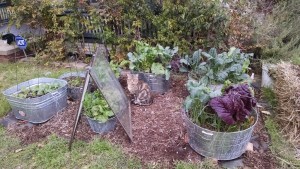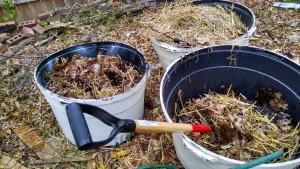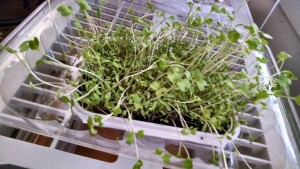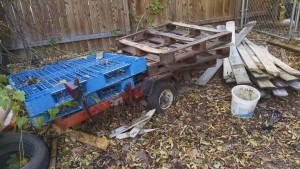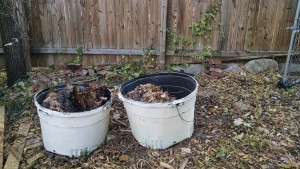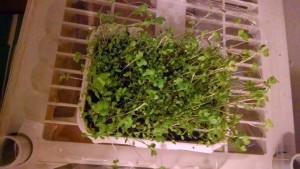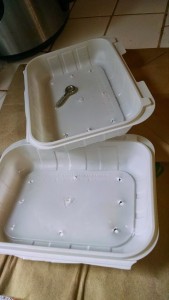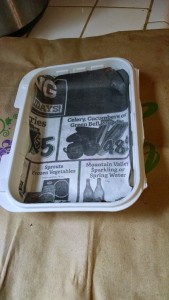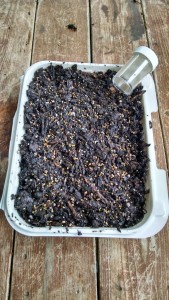The microgreens are about ready to harvest with kitchen shears – at least SOME of them are. I’ll have to taste them to determine which ones are the fastest growing. I may share some of these with my chickens. In fact, I’ll probably prepare another tray of microgreens just for them. At the rate the greens are growing, I could start a tray about every week or two and have a steady supply of tasty salad add-ons throughout the winter!
INTERPLANTING FOR TWICE THE HARVEST; UPDATE ON MICROGREENS
Interplanting is a technique that is used to obtain twice the harvest from the same space. For instance, I will plant root vegetables (that use the growing horizon under the surface) with a leafy vegetable (that uses the growing horizon above the surface). One combination I use is carrots and mustard/chard/spinach. Another combination I like is turnips with bok choy.
I winter plant my carrots in the midst of other plants (e.g., greens) because the greens protect them (it’s called using nurse plants) until the nurse plants are harvested – usually about the time the carrots are ready to take off (in January and February). That way, I get bunches of carrots when I’m getting ready to plant the spring garden.
Meanwhile, the greens in my outdoor garden are getting larger. Every time I harvest some, it seems more grow to take their place. The red mustard must be at least 15-18” high! The lettuce is about to bolt, so it’ll go into my salads this week. I think I’ll plant more red mustard for the color as well as the nutrients. Of course, the kale is happy, and I see the carrots are starting to take off.
Work is continuing on the compost pile, while the microgreens grow higher – selectively.
I decided to use three containers for the compost pile, especially since I had 2 containers’ worth of leaves and chicken coop straw. With a third, I was able to turn the first pile and make sure it was moist. Green matter from the kitchen was added and mixed in well. I was able to use a short-handled fork – one that is commonly used to turn over garden areas. The second container will now be turned into the first, which is now empty. I’ll probably cover the “completed” one to let it heat up; but I’ll continue to turn it on a weekly or bi-weekly basis to make sure it’s aerated.

